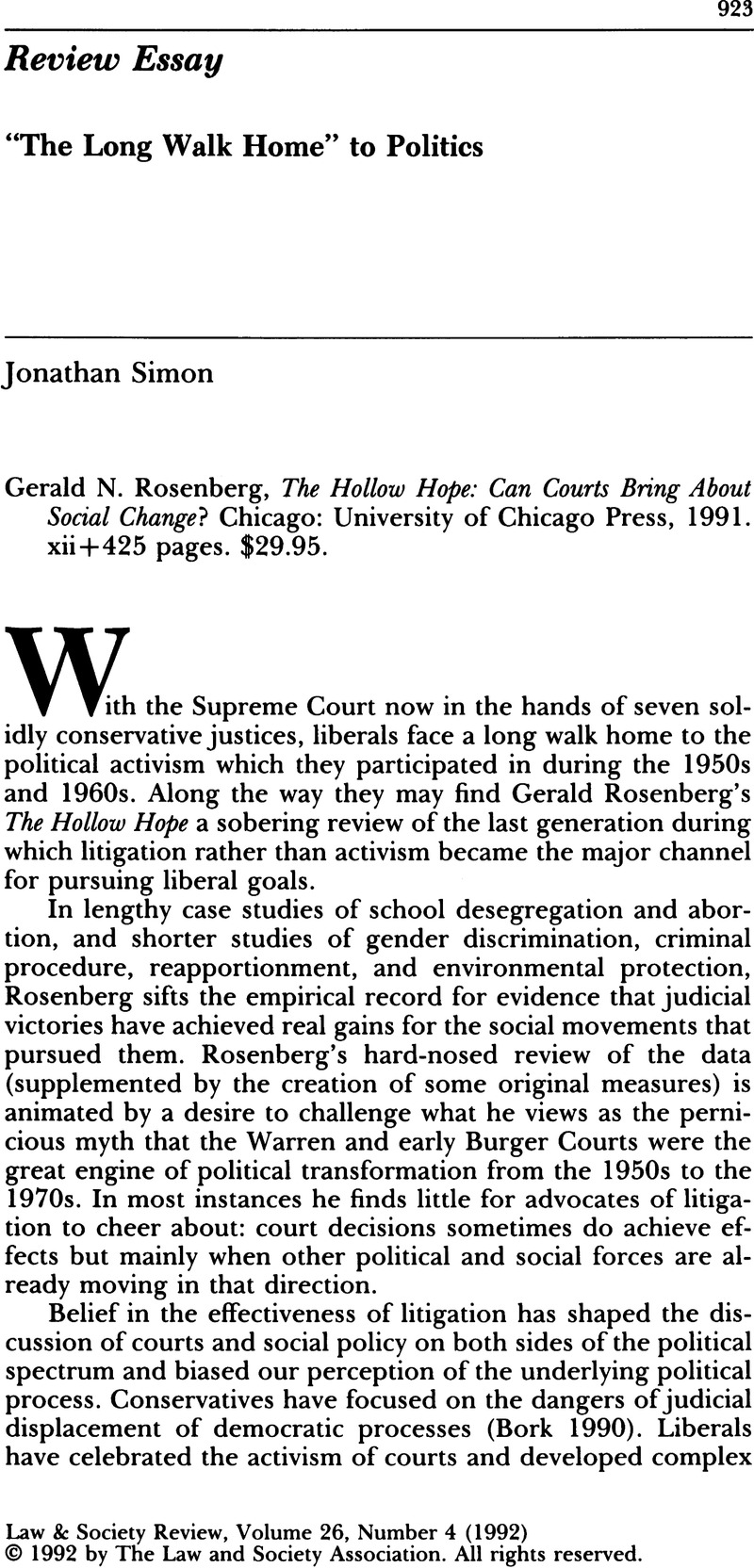Crossref Citations
This article has been cited by the following publications. This list is generated based on data provided by Crossref.
Seron, Carroll
and
Munger, Frank
1996.
Law and Inequality: Race, Gender… and, of Course, Class.
Annual Review of Sociology,
Vol. 22,
Issue. 1,
p.
187.
Barclay, Scott
and
Birkland, Thomas
1998.
Law, Policymaking, and the Policy Process: Closing the Gaps.
Policy Studies Journal,
Vol. 26,
Issue. 2,
p.
227.
Riddell, Troy Q.
2004.
The Impact of Legal Mobilization and Judicial Decisions: The Case of Official Minority-Language Education Policy in Canada for Francophones Outside Quebec.
Law & Society Review,
Vol. 38,
Issue. 3,
p.
583.
Wise, Charles R.
and
Christensen, Robert K.
2005.
A Full and Fair Capacity.
Administration & Society,
Vol. 37,
Issue. 5,
p.
576.
Cummings, Scott L.
2017.
Handbook of Social Movements Across Disciplines.
p.
233.



